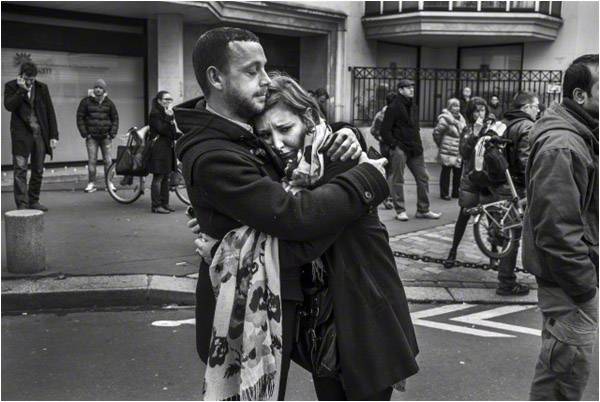
For years, Flemming Rose has been on top of Al Qaeda’s hit list. A Danish journalist, Rose kicked up a storm in September 2005 when he commissioned and published a collection of controversial caricatures in his newspaper, Jyllands-Posten.
It took some time before the images became a subject of global debate and revulsion. A few months after their publication, some Muslim clerics from three Scandinavian countries took it upon themselves to travel across the world along with the copies of the paper and tell everyone about the existence of the cartoons. Rose had to leave Denmark for an indefinite period to avoid the backlash.
The deadly attack on Charlie Hebdo, a French satirical weekly, has refreshed the haunting memories of 2005. While no sane person can justify the killing of 12 people, who included the editors and cartoonists of the French publication, it is important to ask whether all forms of free speech fall under the category of good journalism. What does a newspaper gain by publishing such sacrilegious material? And how does it add to the information of its readers on vital issues?
In 2006, I had a candid conversation with Flemming Rose in Hamburg. He had then defended his decision of publishing the cartoons. Rose had described those images as a manifestation of free speech, a social value that, he added, must be cherished and defended at all cost.
Later, Rose emerged as the champion of press freedom. He spent years in the United States on the Brookings Institution’s fellowship, translated books and carried the baggage of his fateful decision.
“I would leave Denmark for sometime,” he had told me back then. “The situation in my own country is not favourable for me and my family. I will return once things get better.”
So, why did he decide to publish the caricatures? “We took the decision to encourage freedom of expression,” Rose told me in 2006. He asserted that another reason for publishing the caricatures was to reject the mounting pressure of Muslim clerics on the Danish government. A few days before the publication of the cartoons, a delegation of Muslim clerics had met the Danish prime minister, asking him to keep the press from demonising Islam. He said his newspaper had already published similar caricatures of Jesus Christ, Buddha and the Danish royal family.
After publishing the anti-Islam images, Rose apologised to Muslims around the world, claiming it was not his intent to ridicule the Prophet (PBUH). Meanwhile, the Danish attorney general took up the issue under the country’s blasphemy law, but the caricatures were not deemed blasphemous. Rose said he felt guilty for putting the lives of the cartoonists and his staffers at risk. He revealed that many of them had developed psychological problems since they were facing unbearable social condemnation.
The reaction against Jyllands-Posten was severe. In Pakistan, religious parties led processions against the newspaper. They termed the incident a conspiracy to malign Islam – a peaceful religion.
A 28-year-old Pakistani student, Amer Cheema, took law into his own hand and, on March 20, 2006, entered the office of a German daily, Die Welt, with a big knife and attempted to murder its editor, Roger Köppel. Later, Cheema told the investigators that he had tried to kill the editor since he had republished the caricatures that originally appeared in Jyllands-Posten.
Two months later, Cheema was found dead in his cell. The German police declared it a suicide, but the Pakistani authorities claimed he was murdered. Some religious parties declared Cheema “a hero.”
Murder cannot be justified on any grounds whatsoever. But personally, I also failed to find a convincing argument in favour of publishing content that targets any religion, especially when they only strengthen the stereotypes and do not provide a nuanced perspective to the readers.
After the deadly attacks, European leaders need to look inwards before they can contain homegrown militancy. Global terror networks like Al Qaeda and ISIS would love to capitalize on growing the anger among European Muslims because of rising Islamophobia.
Shahzad Raza is an Islamabad-based journalist
Twitter: @shahzadrez
It took some time before the images became a subject of global debate and revulsion. A few months after their publication, some Muslim clerics from three Scandinavian countries took it upon themselves to travel across the world along with the copies of the paper and tell everyone about the existence of the cartoons. Rose had to leave Denmark for an indefinite period to avoid the backlash.
A 28-year-old Pakistani student entered the office of a German daily and attempted to murder its editor
The deadly attack on Charlie Hebdo, a French satirical weekly, has refreshed the haunting memories of 2005. While no sane person can justify the killing of 12 people, who included the editors and cartoonists of the French publication, it is important to ask whether all forms of free speech fall under the category of good journalism. What does a newspaper gain by publishing such sacrilegious material? And how does it add to the information of its readers on vital issues?
In 2006, I had a candid conversation with Flemming Rose in Hamburg. He had then defended his decision of publishing the cartoons. Rose had described those images as a manifestation of free speech, a social value that, he added, must be cherished and defended at all cost.
Later, Rose emerged as the champion of press freedom. He spent years in the United States on the Brookings Institution’s fellowship, translated books and carried the baggage of his fateful decision.
“I would leave Denmark for sometime,” he had told me back then. “The situation in my own country is not favourable for me and my family. I will return once things get better.”
So, why did he decide to publish the caricatures? “We took the decision to encourage freedom of expression,” Rose told me in 2006. He asserted that another reason for publishing the caricatures was to reject the mounting pressure of Muslim clerics on the Danish government. A few days before the publication of the cartoons, a delegation of Muslim clerics had met the Danish prime minister, asking him to keep the press from demonising Islam. He said his newspaper had already published similar caricatures of Jesus Christ, Buddha and the Danish royal family.
After publishing the anti-Islam images, Rose apologised to Muslims around the world, claiming it was not his intent to ridicule the Prophet (PBUH). Meanwhile, the Danish attorney general took up the issue under the country’s blasphemy law, but the caricatures were not deemed blasphemous. Rose said he felt guilty for putting the lives of the cartoonists and his staffers at risk. He revealed that many of them had developed psychological problems since they were facing unbearable social condemnation.
The reaction against Jyllands-Posten was severe. In Pakistan, religious parties led processions against the newspaper. They termed the incident a conspiracy to malign Islam – a peaceful religion.
A 28-year-old Pakistani student, Amer Cheema, took law into his own hand and, on March 20, 2006, entered the office of a German daily, Die Welt, with a big knife and attempted to murder its editor, Roger Köppel. Later, Cheema told the investigators that he had tried to kill the editor since he had republished the caricatures that originally appeared in Jyllands-Posten.
Two months later, Cheema was found dead in his cell. The German police declared it a suicide, but the Pakistani authorities claimed he was murdered. Some religious parties declared Cheema “a hero.”
Murder cannot be justified on any grounds whatsoever. But personally, I also failed to find a convincing argument in favour of publishing content that targets any religion, especially when they only strengthen the stereotypes and do not provide a nuanced perspective to the readers.
After the deadly attacks, European leaders need to look inwards before they can contain homegrown militancy. Global terror networks like Al Qaeda and ISIS would love to capitalize on growing the anger among European Muslims because of rising Islamophobia.
Shahzad Raza is an Islamabad-based journalist
Twitter: @shahzadrez

